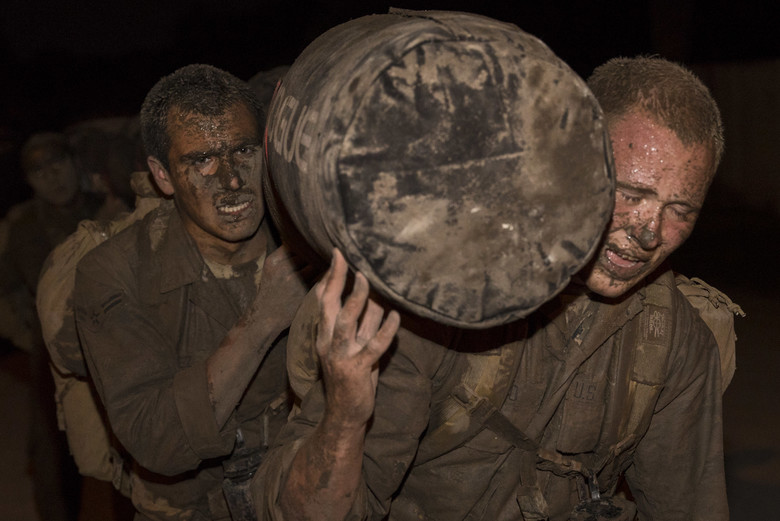Battlefield Airmen Preparatory Course candidates participate in a ruck run April 19, 2018, JBSA Lackland, Texas. Air Force photo.
JBSA-LACKLAND, Texas – Potential battlefield airmen going through the Air Force’s grueling new nine-week “BA Prep” course here are getting wired up with an array of devices so their progress and potential problems can be detected and monitored in the hopes that more candidates will make it through the rigorous training pipeline.
The course is part of the Air Force’s multipart effort to recruit and prepare the right candidates for jobs such as combat controllers, pararescuemen, special operations weather technicians, tactical air control party specialists, explosive ordnance disposal technicians, and survival, evasion, resistance, and escape specialists.
“The prep course was added to reduce attrition rates and create a faster, stronger, and more resilient candidate,” said CMSgt. Joshua Smith, 350th BATS superintendent, in a release. “To accomplish that, we focus on the holistic approach of mind, body, and warrior spirit.”
The goal originally was to increase graduation rates by 10 percent, but the service has more than doubled its goal with rates now just over 20 percent, added Smith.
Physical training has always been a big part of battlefield airmen training, but the prep course looks to combine the grueling physical requirements with high-tech innovations to monitor candidates’ conditions as they progress through the course.
The first such device is a wearable sensor shaped like, and referred to here as, a puck, that transmits candidate data—estimated core temperature, heart rate, and breathing rate—to a laptop, allowing technicians to ensure the candidates are in the safety zone for these indicators and, if needed, get a medic.
Candidates also wear a sensor that essentially takes an advanced electrocardiogram at the beginning and end of the day, as well as a wristband to monitor candidates’ sleep quantity and quality. The wristband tracks how many times candidates wake up during the night, allowing program leaders to figure out who might be overstressed, so they can introduce them to other tools such as float tanks or meditation to help unwind.
Patrick Wilson, the program manager for innovation here, said the information for a whole team can show how well they are sleeping and can allow the program to identify members who may be having problems that are affecting their sleep, which in turn could affect their performance.
A related component of the program is a psychological test, which is administered several times throughout the course.
The point of this effort, and in fact of the prep course itself, is to ensure that candidates are as prepared as they can be for when they start the special operations training pipeline, which has seen high dropout rates in the past.
“This is not a selection course, it is a development course,” Wilson said. “This is the first time we have treated humans like weapons systems.”
